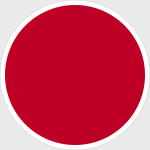DeAgostini DAWF10 Imperial Japanese Navy Aichi B7A2 Ryusei "Grace" Dive-Bomber - Kougeki (Attack) 5th Hikotai, 752nd Kokutai, 1945 [With Collector Magazine] (1:72 Scale)
"We have resolved to endure the unendurable and suffer what is insufferable."
- Japanese Emperor Hirohito speaking to the Japanese people after the atomic bombings, August 1945
 The Aichi B7A Ryusei (Ryūsei, "Shooting Star", Allied reporting name "Grace") was a large and powerful carrier-borne torpedo-dive bomber produced by Aichi Kokuki KK for the Imperial Japanese Navy Air Service during the Second World War. Built in only small numbers and deprived of the aircraft carriers it was intended to operate from, the type had little chance to distinguish itself in combat before the war ended in August 1945.
The Aichi B7A Ryusei (Ryūsei, "Shooting Star", Allied reporting name "Grace") was a large and powerful carrier-borne torpedo-dive bomber produced by Aichi Kokuki KK for the Imperial Japanese Navy Air Service during the Second World War. Built in only small numbers and deprived of the aircraft carriers it was intended to operate from, the type had little chance to distinguish itself in combat before the war ended in August 1945.
The B7A Ryusei (originally designated AM-23 by Aichi) was designed in response to a 1941 16-Shi requirement issued by the Imperial Japanese Navy Air Service for a carrier attack bomber that would replace both the Nakajima B6N Tenzan torpedo plane and the Yokosuka D4Y Suisei dive bomber in IJN service. It was intended for use aboard a new generation of Taihō-class carriers, the first of which was laid down in July 1941. Because the deck elevators on the Taihōs had a larger square area than those of older Japanese carriers, the longstanding maximum limit of 11 m (36 ft) on carrier aircraft length could now be lifted.
Chief Engineer Toshio Ozaki (name often seen as Norio Ozaki, but this is incorrect because the Kanji for both first names are the same and often confused) chose a mid-wing arrangement for the B7A to provide for an internal bomb-bay and to ensure enough clearance for the plane's 3.5 m (11 ft) four-bladed propeller. This in turn necessitated the adoption of an inverted gull wing, reminiscent of the F4U Corsair, in order to shorten the length of the main landing gear. The wing featured extendable ailerons with a ten-degree range of deflection, enabling them to act as auxiliary flaps. Dive brakes were fitted underneath just outboard of the fuselage. The B7A's outer wing panels were designed to fold upwards hydraulically for carrier stowage, reducing its overall span from 14.4 m (47 ft) to approximately 7.9 m (26 ft).
Selection of a powerplant was dictated by the Japanese Navy which requested that Aichi design the aircraft around the 1,360 kW (1,825 hp) Nakajima NK9C Homare 12 18-cylinder two-row air-cooled radial engine. This was expected to become the Navy's standard aircraft engine in the 1,340 kW (1,800 hp) to 1,641 kW (2,200 hp) range. One production model B7A2 was later fitted with a 1,491 kW (2,000 hp) Nakajima Homare 23 radial engine and plans were also made to fit the 1,641 kW (2,200 hp) Mitsubishi MK9 radial to an advanced version of the Ryusei (designated B7A3 Ryusei Kai) but the latter effort never came to fruition.
The B7A had a weight-carrying capacity stemming from its requirements, resulting in a weapons load no greater than its predecessors. The presence of an internal bomb bay with two high-load-capability attachment points allowed the aircraft to carry two 250 kg (550 lb) or six 60 kg (132 lb) bombs. Alternatively, it could carry a single externally mounted Type 91 torpedo, weighing up to 848 kg (1,870 lb).
Defensive armament initially consisted of two 20mm Type 99 Model 2 cannons in the wing roots and one flexible 7.92mm Type 1 machine-gun mounted in the rear cockpit. Later production models of the B7A2 featured a 13mm Type 2 machine-gun in place of the 7.92mm gun.
Despite the plane's weight and size, it displayed fighter-like handling and performance, beating the version of the A6M Zero in service at the time. It was fast and highly maneuverable.
Pictured here is a 1:72 scale replica of an Imperial Japanese Navy Aichi B7A2 Ryusei "Grace" dive-bomber that was attached to the 5th Hikotai, 752nd Kokutai, during 1945.
Now in stock!
Dimensions:
Wingspan: 6-1/2-inches
Length: 5-inches
Release Date: February 2020
Historical Account: "Grace" - Given the codename "Grace" by the Allies, the B7A first flew as a prototype in May 1942, but teething problems with the experimental NK9C Homare engine and necessary modifications to the airframe meant that the type did not enter into production until two years later in May 1944. Nine prototype B7A1s were built and 80 production version B7A2s completed by Aichi before a severe earthquake in May 1945 destroyed the factory at Funakata where they were being assembled. A further 25 examples were produced at the 21st Naval Air Arsenal at Omura.


